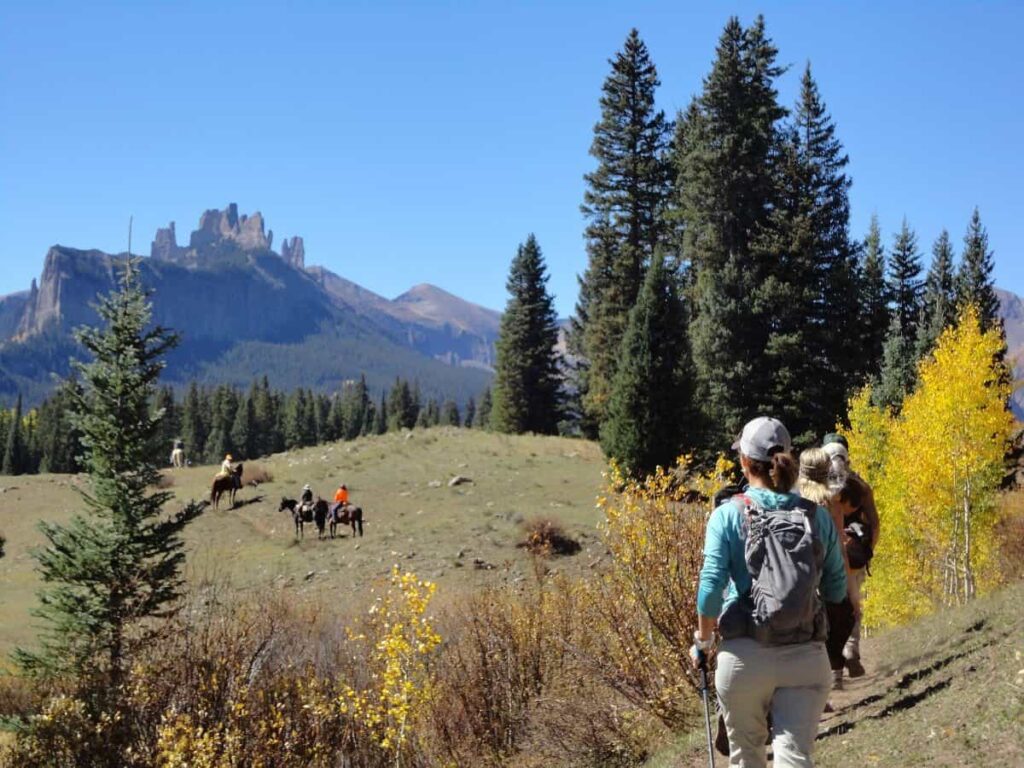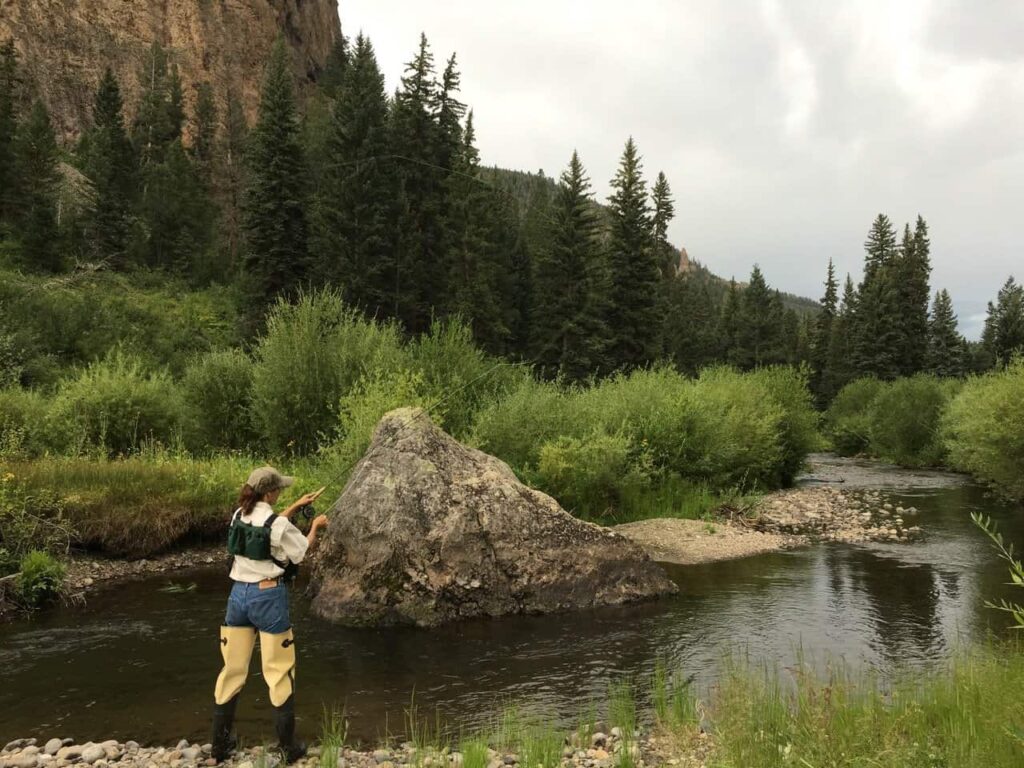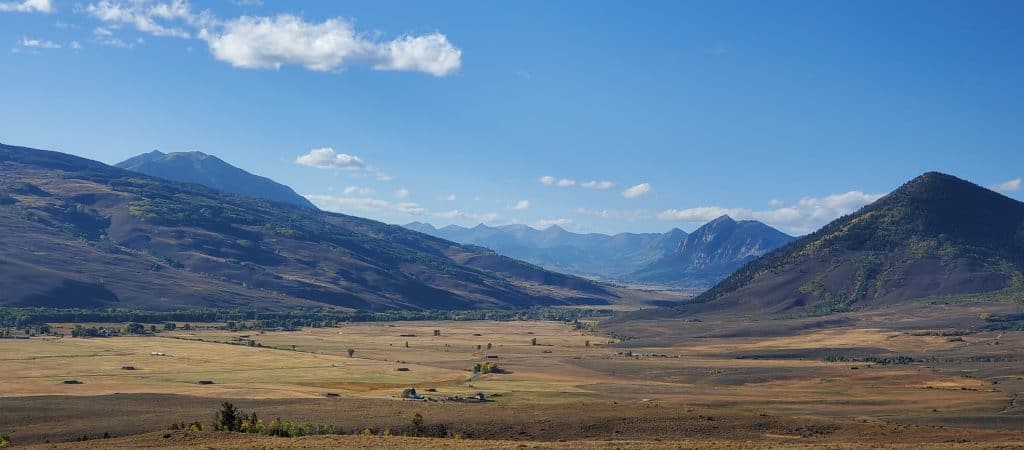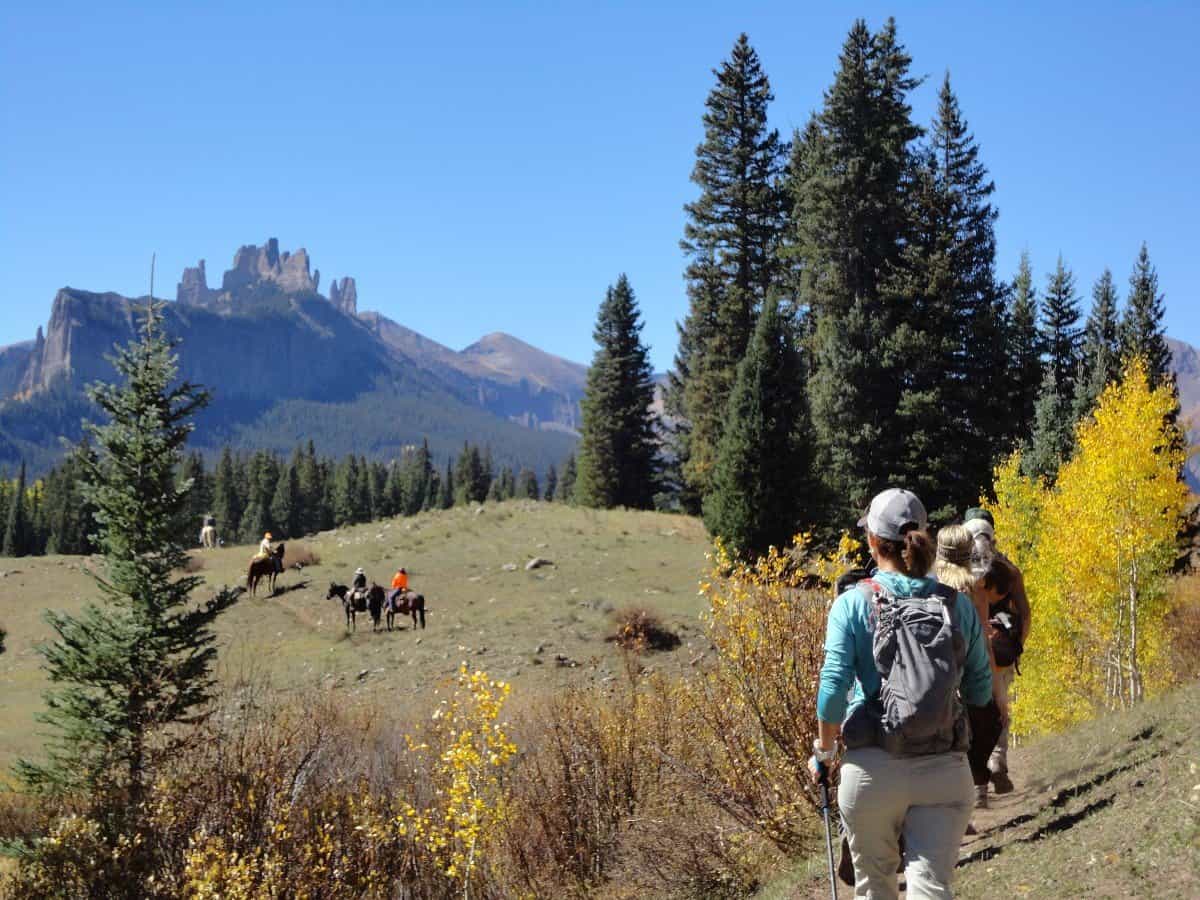
I had a chance to speak with Lizzy Bauer, a 2020 graduate of Western’s Master’s of Environmental Management program—and the Community Organizer for the Gunnison Public Lands Initiative (GPLI), over the phone on June 16.
We discussed the recently unveiled Gunnison Outdoor Resources Protection (GORP) Act—introduced by Colorado Senator Michael Bennet—which Top o’ the World covered back in May, and how the Gunnison community can write the most effective public comments on the new bill. Our conversation, presented below, has been edited for length and clarity.
Editor’s note: To leave a comment on the newly unveiled GORP Act, you can visit Senator Michael Bennet’s website. The comment period remains open through July 19, 2022.
Brian Wagenaar: Do you know how many new acres of wilderness will be designated should the GORP Act pass in its current form?
Lizzy Bauer: For Special Management Areas (SMAS) combined with Wilderness Areas, the total is 514,181 acres. There’s also an additional 210,000 acres that are in discussion right now. Most of that acreage is SMAS, but there are also two wilderness areas in discussion. So, in total we’re looking at over 700,000 acres.
BW: Can you talk about some of the pieces of land impacted by the GORP legislation that students or others in the Gunnison Valley may be particularly familiar with?
LB: Yes — there’s a few places in that southern Crested Butte area that I think students would really know. There’s a SMA proposed for Beckwith (24,000 acres), as well as North Poverty Gulch and South Poverty Gulch (4500 and 1,400 acres, respectively). Treasure Mountain (3,500 acres)—which is adjacent to RMBL, but abuts the Town of Marble on the other side, is proposed for wilderness. Castle also has a proposed wilderness addition (5,600 acres).
East Cement Creek (8,200 acres) is proposed for wilderness. RMBL (12,200 acres) has classifications within the GORP Act specifying that it’s an educational and research area and that these are extremely sensitive habitats—so that’s an SMA. Signal Peak (28,500 acres) would also go under special management if GORP becomes law.
That interactive map on our website is really good, and if you zoom in you can see the areas close to town.
Editor’s note: Curecanti (5,400 wilderness acres), Whetstone (20,500 SMA acres), and the Powderhorn (27,600 SMA acres and 9,600 additional wilderness acres) are also impacted by the GORP Act, in addition to more than twenty distinct areas not mentioned here. Again, you can see for yourself on GORP’s interactive map.

BW: Lizzy, is the GPLI working group anticipating any kind of negative response to the GORP Act? Is that something you’ve planned for as a contingency?
LB: We believe that we have broad public support, and we are expecting that a vast majority of comments will be in favor of this bill, especially locally—because there’s been so much local engagement. The outlier factors are the communities outside of our region. It’s interesting how these things can sometimes get politicized.
We have the Gunnison Stockgrowers Association as part of the GPLI working group—they’ve been a part of the discussion since these discussions started informally back in 2010. GPLI has really done all that we can to incorporate the ranching community and ensure that all their needs are met. The Gunnison Stockgrowers Association has signed on the letter of support that was submitted to Senator Bennet—all 10 stakeholders signed that letter.
But after the press release unveiling the legislation from Senator Bennet, the Colorado State Stockgrowers Association chimed in and said they oppose the bill because of the wilderness and regulation aspects. But again, the local organization here supports it.
Sometimes, what I’ve seen in my experience with public engagement is that if you even say the Capital “W” Wilderness to some people, they will be immediately against it, no matter who else is at the table. I’ve tried to make the argument that there’s been OHV riders, there’s been ranchers, and there’s been all of these other stakeholder groups that have been a part of these conversations—but it’s a struggle.
We also expect there will be some national opposition by the time it gets to that stage. Right now, we’re focusing on Colorado, but these things are a long process. A year or two from now—when GORP gets more momentum in the U.S. Senate, we are bracing ourselves for certain groups to just be opposed to it because of that capital “W” Wilderness piece. Some people just say: “nope, that is not what we should do with our land,” no matter the local community support.
There are also people who don’t want the government to regulate anything, and there are people who don’t believe we should deny access to anywhere, for any reason—no matter how sensitive the habitat is, or how critical it is for wildlife use.
My personal argument on that is: “at what point are we going to say that people have enough land?” Maybe we should share with the rest of the planet—there are other species that also need land to live, and many of them are species we rely heavily on for our own survival. If you can’t figure out a way to share—and to reserve some spaces for other species, I’m unsure about what our collective future is going to look like.
But I think you have to accept that there’s a certain portion of the population that is not going to like our proposal, and there’s just not that much you can do about it. We are really hoping to get broad support from the people who are listening and swing a lot of the middle-ground people who are unsure.

BW: I’m curious, after the public comment period ends on July 19—what comes next for GPLI and the GORP Act?
LB: That’s a great question. We won’t really have an answer until the public comment period closes. We want to reconvene the working group and review the comments about two weeks after the public comment period closes. The outcome of the public participation is going to determine what we think are the strategic next steps.
If 95 percent of public comments come in positive, that would be a different outcome than if it was 50-50, or even 70-30 positive. We’ll have different strategies for each of those outcomes. We’re expecting largely positive comments, but it’s totally acceptable and okay to say “overall I support this vision, but I would love to see this one trail changed, or I don’t like this one designation”—we’ll take all of that into consideration.
I just had a candid discussion with some of the coordinators a couple of days ago, and we were really realistic about how the senate process works. Just because we’re super excited that this public comment period is happening, that does not mean this is going to get passed as soon as the public comment period is over. It’s still likely going to be at least a two to three year process.
There might be adjustments made in Congress, and there might be other things that come into play as they’re deliberating. Like I said, there’s still over 200,000 acres of land in discussion. We’ve been doing a lot of engagement with the Ute Mountain Ute, and it’s likely that they will end up including at least a portion of the Ute Ranch, over by Blue Mesa and Sapinero, in the GORP Act as a tribal land trust. That is the sort of thing that can develop while they’re deliberating.
On the other hand, there could be things that the senate does not like—maybe they want to remove the American Flag area, just as an example. Everybody has a different agenda, and GORP might come out of that process looking a bit different than when it went in.
BW: Speaking of the public comment period—do you have tips for students or others in the community on writing comments?
LB: Yeah—I can give you some general advice that is applicable for life in submitting all types of public comments. Recently, I had a really interesting conversation with a Forest Service District Ranger—he was saying that anytime there’s a public participation session, you get a plethora of comments, but you get about five that are really useful and that the Forest Service can do something with.
As I’ve reviewed more public comments myself during my own work, I can completely understand what he’s saying. I can’t tell you how many times that I’ve read a public comment and I can’t even tell what side of the fence the person is on. They might generally speak on the area in question, throwing in some opinions here and there, but they never say either “I support” or “I do not support” the thing in question.
People should very clearly define—and do it in the first sentence—whether your general impression is positive or negative. Start your comment out with: “I support the GORP Act”, or “I do not like the GORP Act, and this is why.” Be very clear about your position.
And be as specific as you can about your opinion. If you can specify certain areas that you like or don’t like, that’s great. Or put in a personal anecdote, like: “I’m a mountain biker, and I appreciate that you’re considering my interests and not closing down my favorite trail.”
The more specific you can get, then the more that the agency, or Congress, or whoever may be looking at your comment—can use that information. We can say: “oh, this person didn’t like that this trail is included, and maybe there’s other people who also don’t like that—let’s discuss this further with our stakeholder groups.”
Rambling on about your more general views on wilderness, or your general political opinions—that is not useful information. Be specific about what it is that you’re concerned about. Tell us how to best support your interests.

BW: Are there other things that agency officials or politicians are looking for in public comments?
LB: It always helps your interest if you begin your comment with what people are doing well. Throw the agency or politician a bone and pat them on the back for a second. They’re generally more receptive to your interests if you show them that you see the work that they’re doing, and that you appreciate the time and effort they’ve put into this process.
It also speaks volumes if you’re a local and can speak to being a Colorado resident, or wherever you are commenting on. Speaking from personal experience—those anecdotal stories, I think those are really powerful.
If you tell us why you live in Gunnison County, what you love about Gunnison County, and why you’re proud to be a Coloradan—they’re going to be really receptive to that sort of thing. If you’re a resident of Colorado, then Senator Bennet is interested in your opinion as a constituent.
BW: What else should people know about the GORP Act?
LB: There are a few special things about the GORP Act. Most land management bills that propose wilderness are typically very high elevation that are largely rock and ice—very rugged terrain that is not prime habitat for most wildlife. They are beautiful vistas, they’re incredible landscapes, but they have very specific niche species in those environments.
The GORP Act proposes wilderness in a few middle elevation zones that have that lush vegetation and habitat that are prime for a lot of the species we are dependent on. In Colorado, a lot of our tourism economy is based on the hunting industry—people come from out of state to hunt in Colorado, and Gunnison is a big part of that.
Big game is something that has been examined from the beginning with these designations, and we want to make sure that elk and other big game have the habitat they need to continue to survive for generations to come. That’s a consideration that’s pretty unique to the GORP Act.
Recently, the Gunnison sage grouse has been taken into more consideration. There’s a lot of sagebrush habitat at lower elevations that have been incorporated into the GORP Act. Specifically over the last year or two, there’s been a lot of consideration to ensure that habitat is connective. Instead of having these sort of patches around those lower-lying areas, we thought about how to make the habitat more connective.
Water—both quality and quantity—have been taken into consideration from the beginning. Last summer—when they drained Blue Mesa Reservoir for Lake Powell, I think we all gasped. And that’s something we have thought of since the beginning—how do we conserve our freshwater sources for both our municipal water, as well as for recreational activities like fishing and kayaking.
Protecting forest health and creating these connected habitats are one of the biggest ways to protect these water resources. If you have a healthy forest, then you have a healthy stream.
Editor’s note: To make a comment on the GORP Act, you can go to Senator Bennet’s website.


